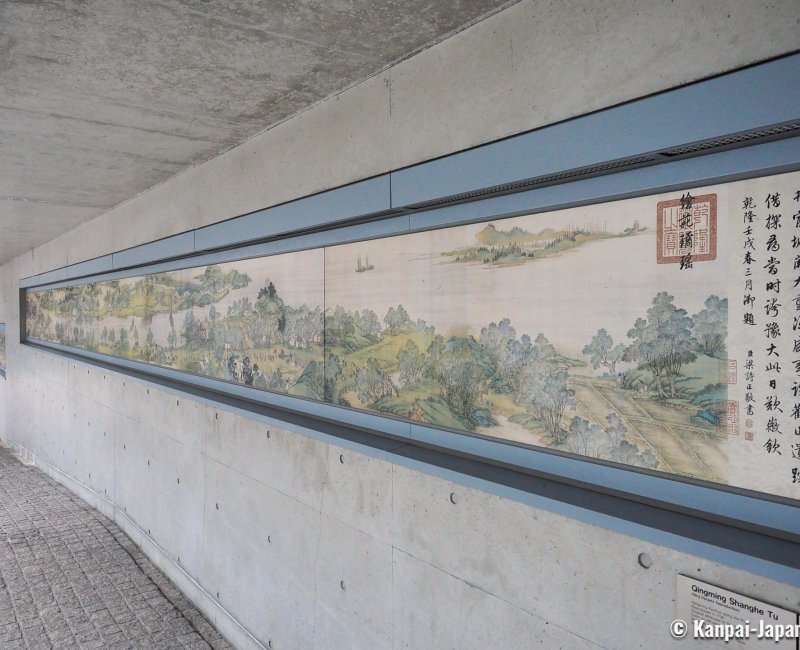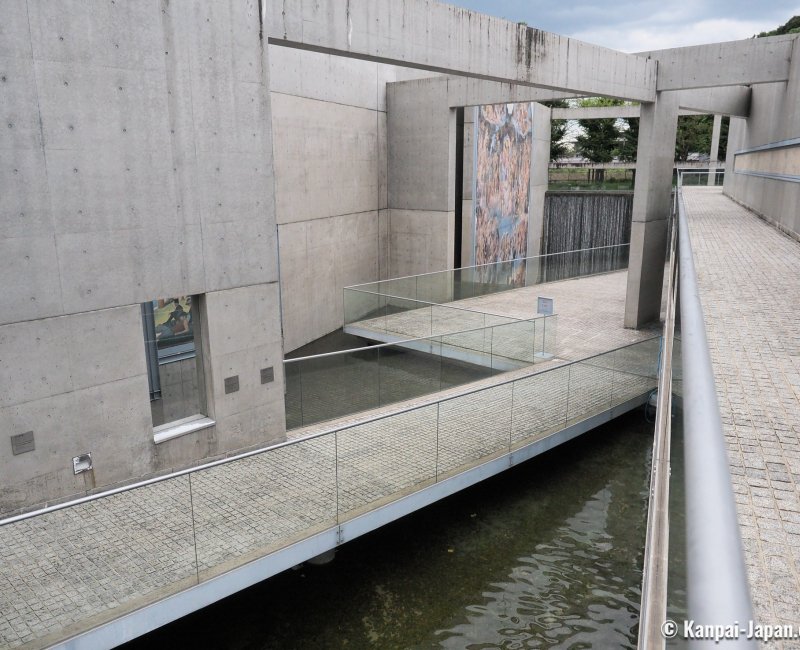Garden of Fine Arts Kyoto
Unalterable Paintings and Contemporary Architecture
Garden of Fine Arts Kyoto is a small open-air museum located in Sakyo ward in the north of Kyoto, near its Botanical Garden. Tadao Ando designed this space of glass and concrete where 8 painting masterpieces were recreated in ceramic tiles.
Inaugurated in 1994, the "fine arts’ garden" is the 1rst painting garden in the world, featuring 8 masterpieces of the world’s artistic heritage that were reconstructed using ceramic tiles.
8 famous masterpieces
These "ceramic paintings" were imagined by Taichi Sakaiya, a Japanese writer and politician who also took park in the organization of Osaka’s Expo’70. They were commissioned by the Daikoku Denki group, an electronics manufacturer specializing in pachinko machines. 4 of the panels were 1rst exhibited at Osaka’s 1990 International Horticultural Exposition, in Tsurumi Ryokuchi Park:
- Michelangelo’s Last Judgment (1536 – 1541), from the original fresco ornamenting Vatican’s Sistine Chapel;
- The Last Supper (1495 – 1498) by Leonardo da Vinci, a mural displayed at Santa Maria delle Grazie, Milan;
- Choju jinbutsu giga (鳥獣人物戯画), a 12th century Japanese painted scroll, considered the ancestor of manga. The original scroll is kept at Takao’s Kozan-ji temple, in the north-west of Kyoto; and,
- An 18th century rendition of Along the River During the Qingming Festival, a Chinese painting preserved in Beijing’s Forbidden City.

These 4 artworks made the first "garden of famous paintings" (名画の庭) that was displayed at the Daikoku Denki pavilion, themed on the garden of the future, and already designed by Tadao Ando.
The last 4 other artworks are:
- Water Lilies (1914-1918) by Claude Monet, whose original is kept at Musée de l’Orangerie in Paris. Here, it is tastefully laid on the bottom of a clear water pond;
- A Sunday Afternoon on the Island of La Grande Jatte (1884 – 1886) by Seurat, whose original is exhibited at the Art Institute of Chicago;
- Two Sisters (On the Terrace) painted by Renoir in 1881, also kept at the Art Institute of Chicago; and,
- Road with Cypress and Star or Country Road in Provence by Night, by Vincent Van Gogh, painted in 1890 and kept at the Kröller-Müller Museum in the Netherlands.
They were put together specifically for the Garden of Fine Arts, Kyoto, and all the artworks were donated to Kyoto Prefecture.

Monumental architecture
The open-air museum is only 200sqm, but it doesn’t feel small thanks to the touch of Tadao Ando, its architect. Ando used his favorite gimmicks: large surfaces of smooth concrete, dynamic and assertive geometrical shapes, and a play on light and darkness to enlarge the space. The museum spreads over 3 terraces, of which 2 are under the level of the street. They are connected by concrete ramps, going down to the pond that collects the flow of a waterfall at the back of the roofless structure.
The original monumental artworks are reconstituted full-scale, while the smaller ones are recreated 2 times bigger than their initial scale. Benches are spread along the walk to take a contemplative rest. Unlike its neighbor the Botanical Garden and contrary to what its name suggests, the Garden of Fine Arts is a fully mineral space, without any vegetation. Lushness only lies in the colors of the artworks displayed in this ultra-minimalist environment.
The Garden of Fine Arts is a contemporary strangeness in Kyoto’s historical cityscape, but it still manages to blend in and preserve the view on Mount Higashiyama. Initially designed for displaying artworks that are loved by a Japanese audience, it mainly attracts curious passersby and fans of Tadao Ando.

